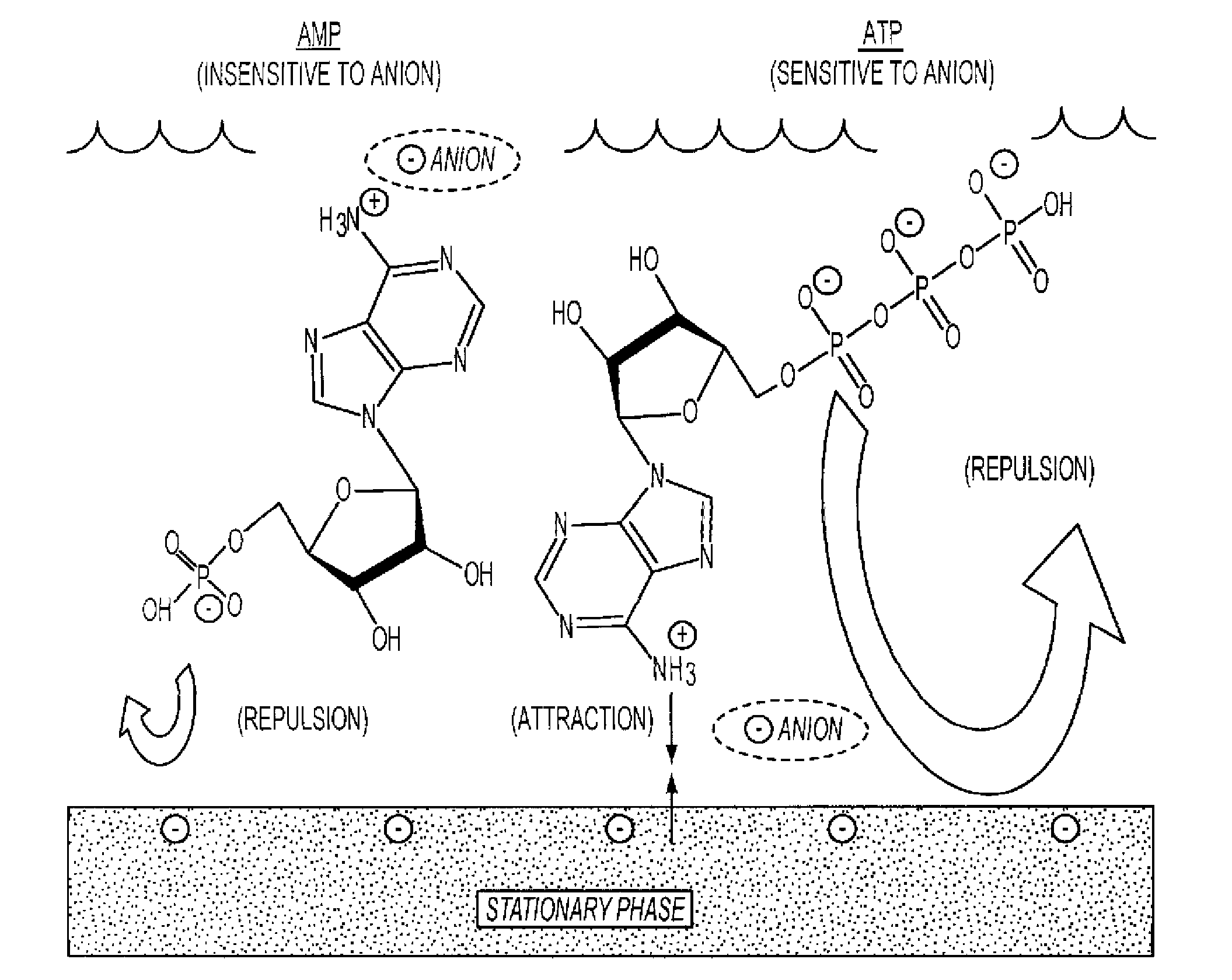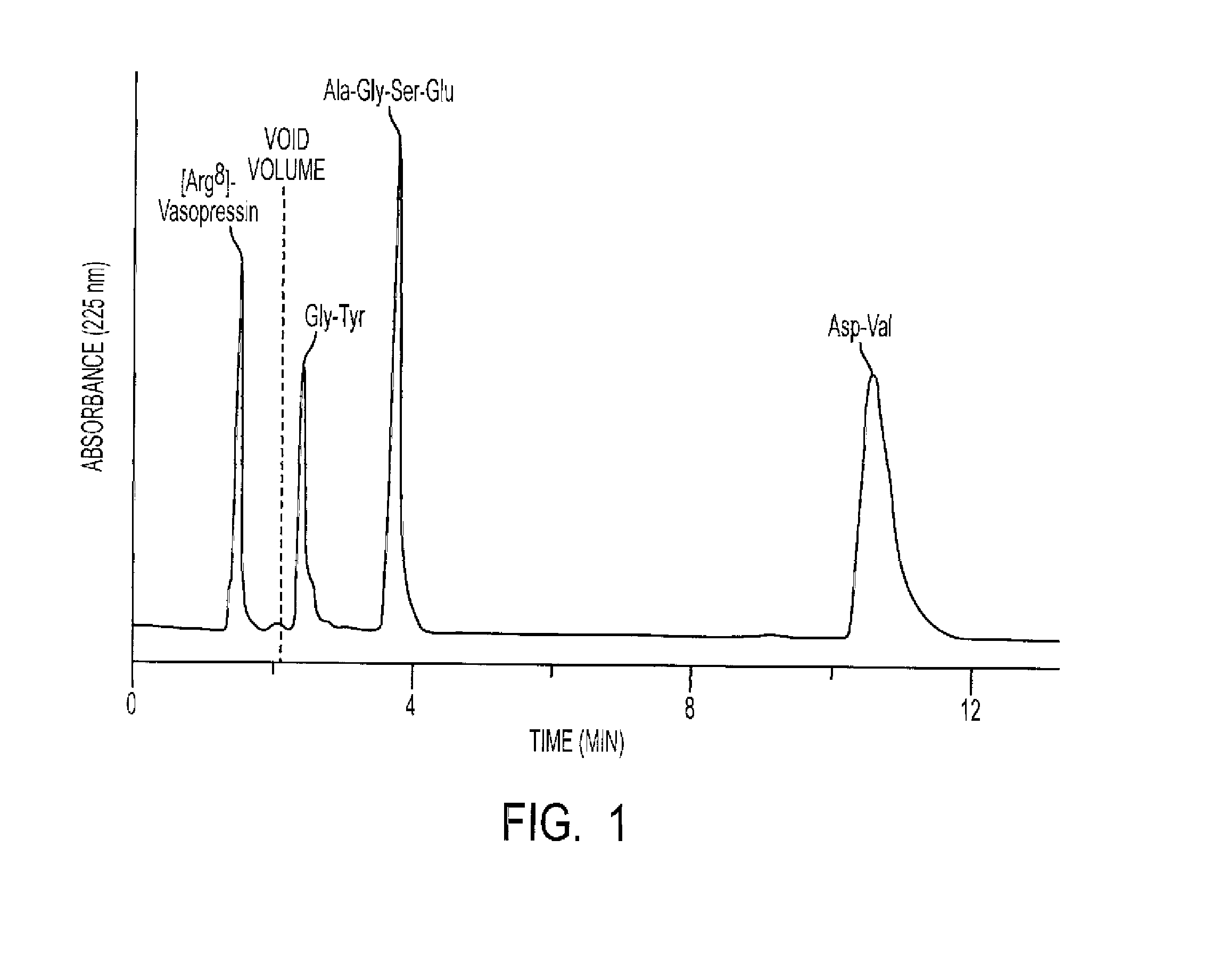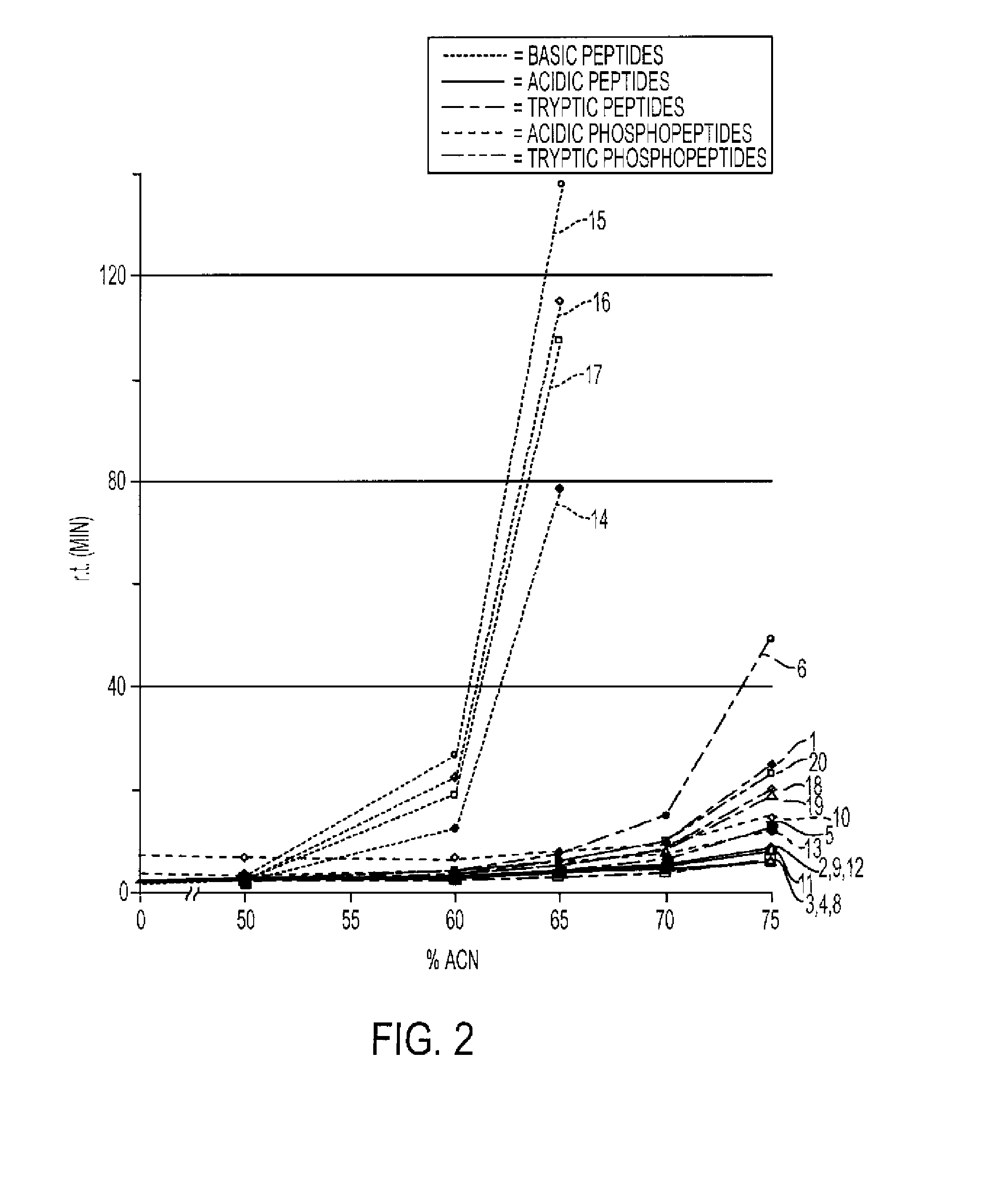Separation of Charged Solutes by Electrostatic Repulsion-Hydrophilic Interaction Chromatography
a technology of hydrophilic interaction and electrostatic repulsion, which is applied in the field of chromatography methods, can solve the problems of complicated elution of charged solutes, additional equipment, and complicated gradient us
- Summary
- Abstract
- Description
- Claims
- Application Information
AI Technical Summary
Benefits of technology
Problems solved by technology
Method used
Image
Examples
Embodiment Construction
[0030]The present invention introduces a new strategy of performing chromatography to separate mixtures with highly charged solutes which are either too poorly or too avidly retained during HILIC. The strategy involves combining the principles of ion exchange and hydrophilic interaction. Using the methods of the present invention, amino acids, peptides, nucleic acids or nucleotides that would not be retained or would be retained too well by the stationary phase in either HILIC or ion-exchange chromatography can be effectively separated in a reasonable time frame. The methods superimpose the separation power of both hydrophilic interaction and electrostatic interaction, thereby antagonizing the extremes of retention found with either method alone. By eliminating both long and short retention times for certain solutes, the methods permit isocratic resolution of heterogeneous mixtures which otherwise would require complex gradient elution. This new combination of chromatography princip...
PUM
| Property | Measurement | Unit |
|---|---|---|
| Polarity | aaaaa | aaaaa |
| Concentration | aaaaa | aaaaa |
| Hydrophilicity | aaaaa | aaaaa |
Abstract
Description
Claims
Application Information
 Login to View More
Login to View More - R&D
- Intellectual Property
- Life Sciences
- Materials
- Tech Scout
- Unparalleled Data Quality
- Higher Quality Content
- 60% Fewer Hallucinations
Browse by: Latest US Patents, China's latest patents, Technical Efficacy Thesaurus, Application Domain, Technology Topic, Popular Technical Reports.
© 2025 PatSnap. All rights reserved.Legal|Privacy policy|Modern Slavery Act Transparency Statement|Sitemap|About US| Contact US: help@patsnap.com



